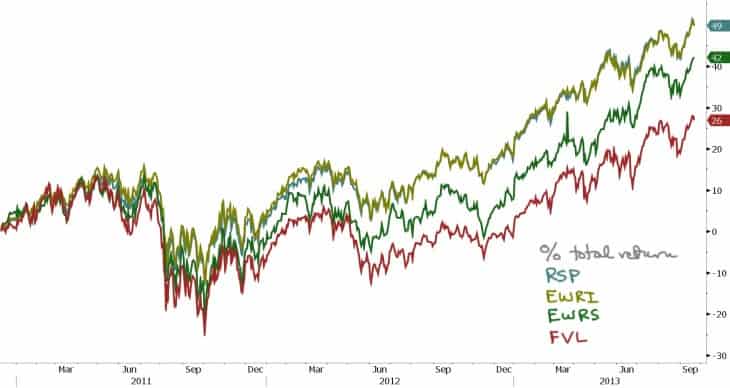Tom Brakke recently featured our Dangers Zone article on FVL. He highlights the lack of performance of FVL (see figure below from Tom’s post)versus other true index funds and supports my thesis on First Trust Value Line 100 ETF (FVL) as another example of a supposedly “passive” ETF that purportedly tracks an index but actually resembles an actively managed portfolio. So, investors get duped into active investing because they trust the provider more than they should.
Anyone can create an index, and often the index is created specifically for the purpose of launching an ETF. FVL tracks the Value Line 100 Index. According to their website:
“The index is an equally-dollar weighted index that is designed to objectively identify and select 100 stocks from the universe of stocks to which Value Line assigns a #1 ranking in the Value Line Timeliness Ranking System.”
It’s unclear how exactly the selection is “objective” as the site claims. They tell you on the website that:
“The components of the Timeliness Ranking System, include factors such as the 10-year trend of relative earnings and prices, recent earnings and price changes, and earnings surprises.”
That sounds to me like analyzing a variety of technical and fundamental data points to select stocks that you expect to outperform the market, a.k.a. active management. Even if the stocks are being selected based on a formulaic criteria, that’s still a criteria created by humans. New Constructs puts out the Most Attractive and Most Dangerous stocks list every month based on our stock ratings. Even though those rankings are based on defined criteria, I would never describe them as an index the way Value Line is doing with their rankings system.
FVL does not hold an index, it holds a portfolio of stocks that, like any actively managed portfolio, is designed to out-perform the market. There’s nothing inherently wrong with this. Actively managed portfolios can out-perform the market, even if most of them don’t.
However, an actively managed portfolio masquerading as an “index” fund is a red flag for investors as well as another reason to study a fund’s holdings. Investors need diligence to protect themselves from what Barron’s calls the Danger Within.
